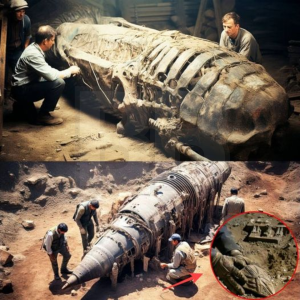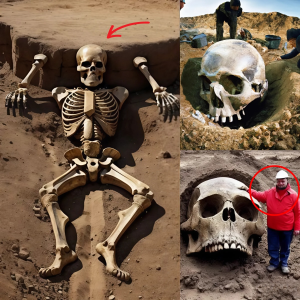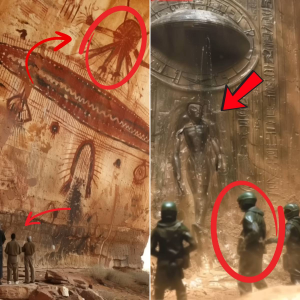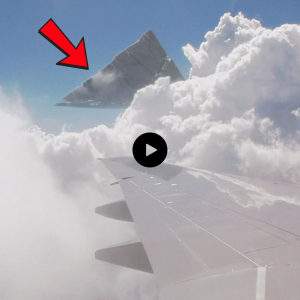In 1985, a frozen and half buried mummy of a young boy was recovered from the mountain of Aconcagua in Argentina.
Now, a team of scientists have managed to extract and sequence his mitochondrial DNA from a biopsy of the mummy’s lungs.
The results are astonishing and indicate that the child belonged to a genetic population whose lineage has not previously been identified in modern Native Americans.

When the mummy was first discovered by a group of mountaineers in 1985 it was found half-buried at the base of the Pirámide mountain near Aconcagua, in Argentina’s province of Mendoza. The mummy was identified as a boy who would have been around 7 years old at the time of his death.
The cause of death may have been due to the controversial Capacocha sacrifice, argued by some to have been routinely performed by Incas five centuries ago at times of hardship. [Note from Editor: There is strong evidence to suggest it was not in fact the Inca but a number of tribes conquered by the Inca that carried out sacrifice.]
The Ritual of Capacocha
Although it continues to be debated, the ritual of Capacocha has been argued to have taken place when the Incas were going through difficult circumstances, such as the death of the Emperor, a period of bad harvests, or as a response to a natural disaster.
The chosen children were thought to have been aged between 6-15 years old, of great beauty, and normally they were said to have been the children of chiefs.

These children were sent to Cuzco where they may have taken part in a celebration involving animal sacrifice and symbolical marriages which were meant to strengthen the bonds between different populations in the Inca Empire.
Upon completion of the celebrations, all the people returned to their hometowns before the children were called away again to go to their final destinations.
The children to be sacrificed were said to have been taken to a previously chosen sacred mountain where they would make the ultimate sacrifice. Some scholars argue that this fate was given to the child upon their birth and accepted by him/her as a duty.
These children were considered to have been the purest of beings, and were sent to contact the gods with a message from their people.
It has been argued that the children prepared for their destiny months in advance by eating a diet of corn and animal protein. It is also said that they were provided with fine clothes and rich jewelry when they were sent to fulfill their duties.
It would have been a long and complicated journey so the children, especially younger ones, were supposedly encouraged to consume coca leaves, which would have helped them breathe during the hard climb to the top of the mountain.
At the top, the children were said to have been inebriated and then κιʟʟᴇᴅ by strangulation or, more commonly, a blow to the head. Then the body was placed within a pit in the ground. The child’s corpse would have been accompanied by rich grave goods consisting of personal ornaments, textiles, food, and many everyday objects.
According to the Incan beliefs, the children did not die, but instead met with their ancestors after their earthly demise. This sacrifice was thought to have strengthened the ties between Cuzco and the most remote places of the Inca Empire, as well as the relationship between gods and men – bringing health and prosperity throughout the territory at the time.
Genetic Analysis of the Andean Mummy
Now, as reported in the journal Scientific Reports of the Nature group , scientists have managed to extract DNA from a lung biopsy of the mummy of the child to sequence the mitochondrial genome.
An analysis through which it has been possible to identify a new haplogroup that, until now, had not been detected in contemporary populations, and which has been named C1bi.
In collaboration with researchers from the National University of Cordoba, Argentina, scientists led by a geneticist and professor at the University of Santiago de Compostela (USC) Antonio Salas Ellacuriaga, and the pediatrician Federico Martinon, head of clinical pediatrics at the Clinical Hospital of Santiago de Compostela , believe that the child’s lineage appeared about 14,000 years ago.

They believe that the lineage probably came to the area during the first waves of immigration in the Americas. In addition, they argue that one of the possible reasons for its decline was the weakening suffered by the first American peoples following the arrival of Europeans and the epidemics they brought with them.
The experts believe that there may still be living descendants of this lineage found in some parts of Peru and Bolivia. They also have noted a high affinity of the haplogroup C1bi in skeletal remains belonging to an individual who lived in the ancient Wari (Huari) empire .
As explained by Antonio Salas Ellacuriaga in the newspaper El Mundo , the mitochondrial genome is transmitted by mothers to their children and:
“it is a part of the genome that gives us valuable information from the population point of view. The Wari came before the Incas, but coincided with them in space and time, so the Incas could have some kinship with them.
It is no coincidence that we have analyzed one Wari individual and the results are a profile affiliated to the same lineage. We therefore believe that it should be common.”
According to the newspaper El Faro de Vigo , this work has been added to a major bioinformatics and mathematical effort that allows a comparison of the results obtained through laboratory tests with a global database of approximately 28,000 complete mitogenomes and more than 170,000 partial sequences.
Future Goals and Projects
The application of modern DNA techniques increases the possibility of better knowledge into diseases and lifestyles of the most ancient civilizations.
Therefore, the next goal for this scientific team will be to sequence the complete genome of the child. If they achieve this, they will have access to data that could provide information on diseases that the boy may have suffered from and perhaps his physical characteristics as well.
At the same time, the team is also trying to obtain the first ancestral microbiome, allowing them to find out more about the microbial ecosystem of the child. As stated by the geneticist Salas Ellacuriaga in the newspaper El Mundo :
“Many indigenous and Inca died from epidemics, due to pathogens, so studying an archaic microbiome would allow us to see its architecture. The lung is not a sterile tissue.
It had a fauna and flora that we would like to define because it can provide very interesting information on pathogens and how they produced past infections.”





